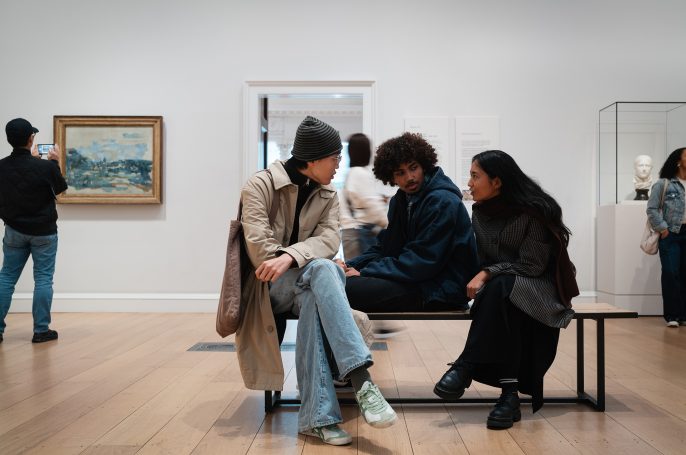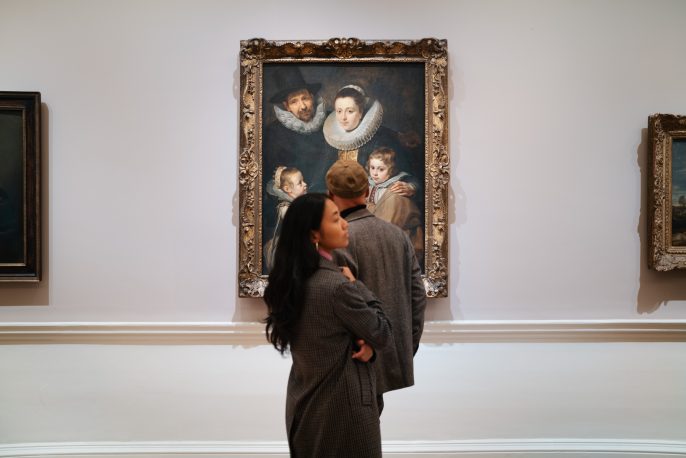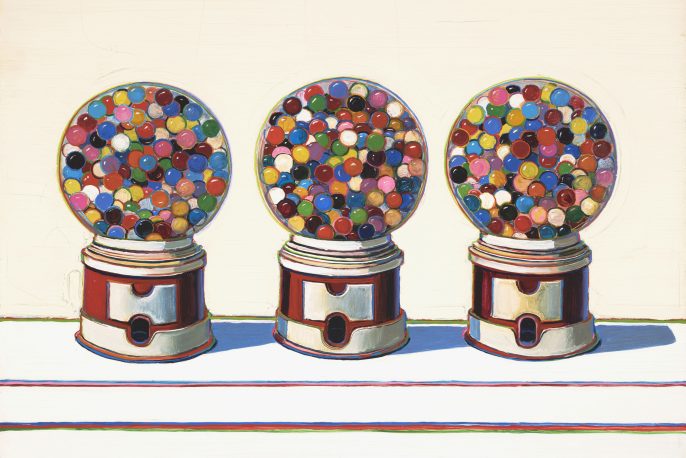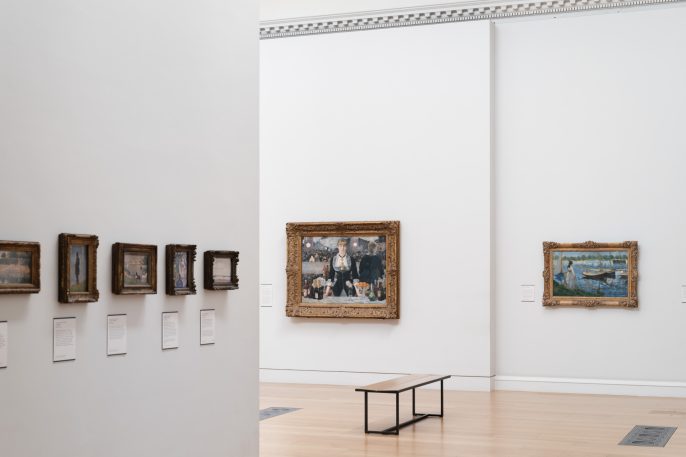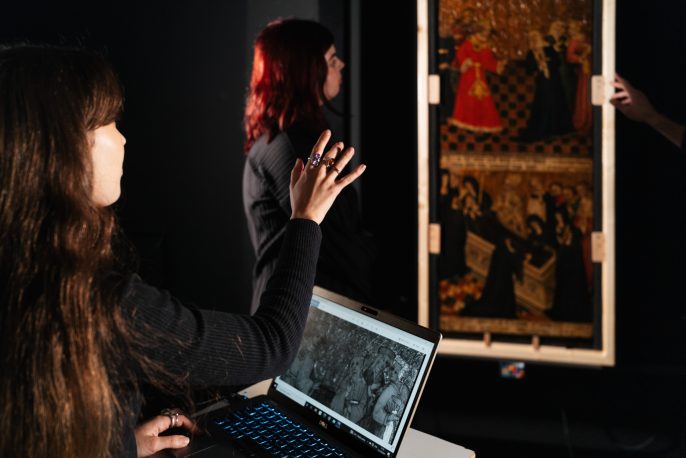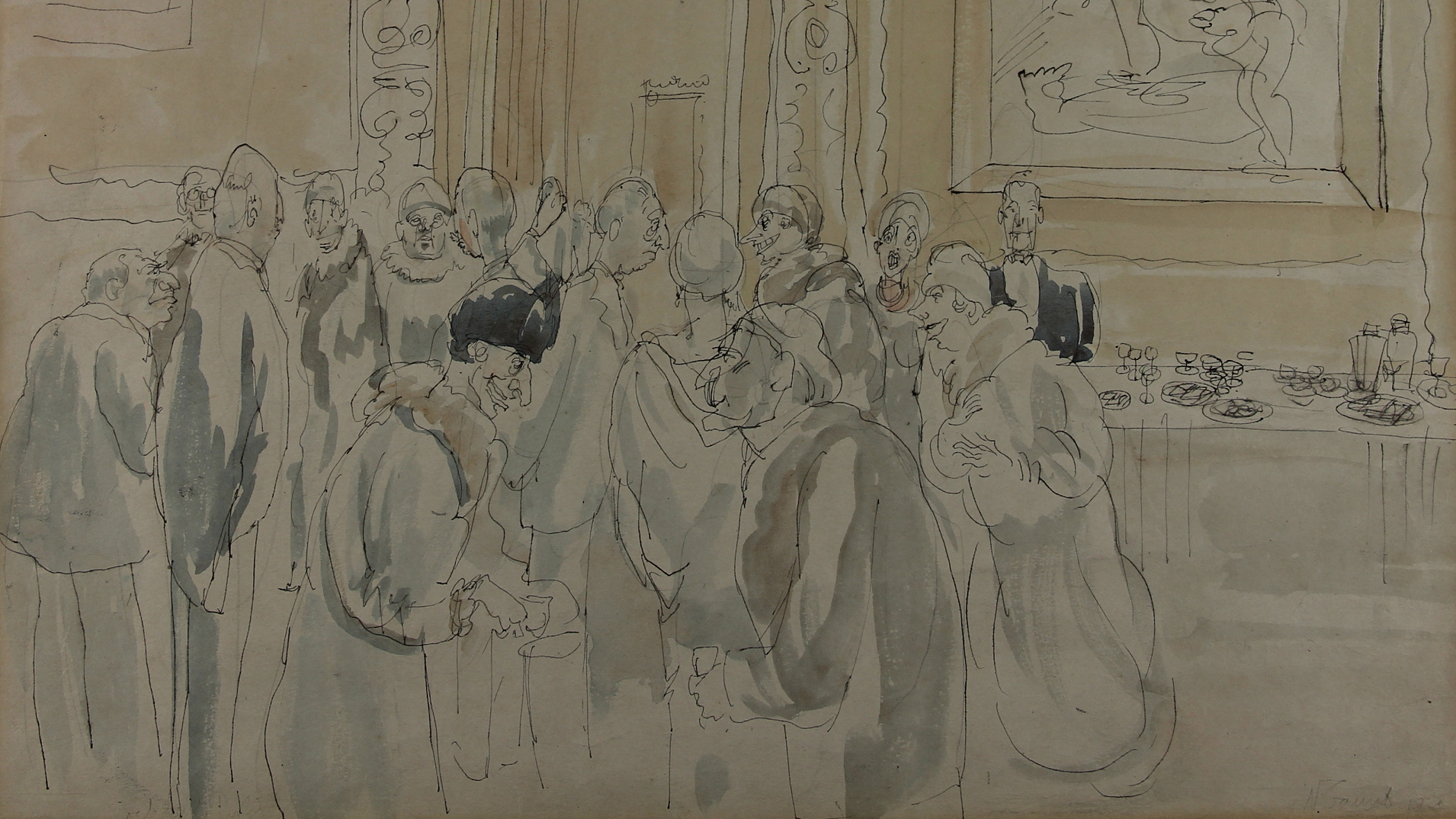
News Archive 2020
The Courtauld announces new acquisitions by artists William Gaunt and Archibald Standish Hartrick
The Courtauld is delighted to unveil the addition of two watercolours by artists William Gaunt (1900 – 1980) and A.S. Hartrick (1864 – 1950) to its extensive collection of works on paper.
William Gaunt was an English artist, journalist, critic, novelist and art historian who made lively drawings and watercolours of life in London in the 1920s, and exhibited his works at the Royal Academy in 1930. They were also published as an illustrated book – London Promenade (1930)- a gentle satire of the city.
The Cocktail Party. Mr Samuel Courtauld’s House, 1928, depicts a scene of a party in the ballroom at Home House in Portman Square, London – the residence of The Courtauld’s founder Samuel Courtauld (1876 – 1947) and his wife, Elizabeth Courtauld (1875 – 1931).
In the 1920s, the house was a hub for leading cultural figures – including artists, authors such as Virginia Woolf and composers – and many attended parties such as the one represented by Gaunt in this drawing. It is the only known depiction of Home House during the Courtaulds’ residence there.

William Gaunt (1900-1980),The Cocktail Party. Mr Samuel Courtauld’s House, 1928. The Samuel Courtauld Trust, The Courtauld Gallery, London.
Several of the caricatured partygoers in the drawing are identified by the writer and critic Sacheverell Sitwell in a letter attached to the backboard of the frame. They include his brother Osbert (centre, in the doorway), also a writer; the author and socialite ‘Lady Oxford’ (Margot Asquith, Countess of Oxford and Asquith; foreground, with the dark fur hat) and the famous barrister St John Hutchinson (the tallest figure on the left).
Samuel and Elizabeth Courtauld were some of the most important art collectors and philanthropists of the first half of the 20th century, yet few photographs of them exist. This drawing is an important testament of their collection and their social circle gathering in their London residence.
Portrait of Paul Gauguin, circa 1913, by the Scottish artist A.S. Hartrick, is one of only two portraits that Hartrick made of Gauguin, whom he first met in 1886 – 87 when both artists were lodging at the Pension Gloanec in Pont-Aven, France.
A.S. Hartrick, (1864 – 1950), Portrait of Paul Gauguin, circa 1913. © The Samuel Courtauld Trust, The Courtauld Gallery, London.
The watercolour portrays Gauguin as Hartrick remembered him a few years later, and was intended for a short publication on Gauguin and Van Gogh in the mid-1910s. It was later reproduced in black and white in Hartrick’s autobiography A Painter’s Pilgrimage through Fifty Years (1939).
An inscription by Hartrick at the bottom of the portrait, describes: “Paul Gauguin then bathed at this spot – which he used as background for Calvary.” This refers to the same landscape that Gauguin featured in his famous painting, Breton Calvary (1889) which is now at the Royal Museums of Fine Art of Belgium.
The significance of this recently rediscovered watercolour is considerable as there are few extant portraits of Gauguin by his contemporaries, and its existence is made all the more remarkable since Hartrick most likely painted it from memory.
The Courtauld already holds two key paintings from Hartrick’s sojourn in Pont-Aven – Back of Gauguin’s studio in Pont-Aven, (1886) and Street in Pont-Aven, (1886).
Bringing this watercolour portrait together with The Courtauld’s collection of works by Gauguin, the most significant in the UK, is an opportunity for further academic research into Gauguin and his milieu. This is also the first time that Portrait of Paul Gauguin will be made available to the public since its creation.
Both artworks have been purchased by The Samuel Courtauld Trust.
